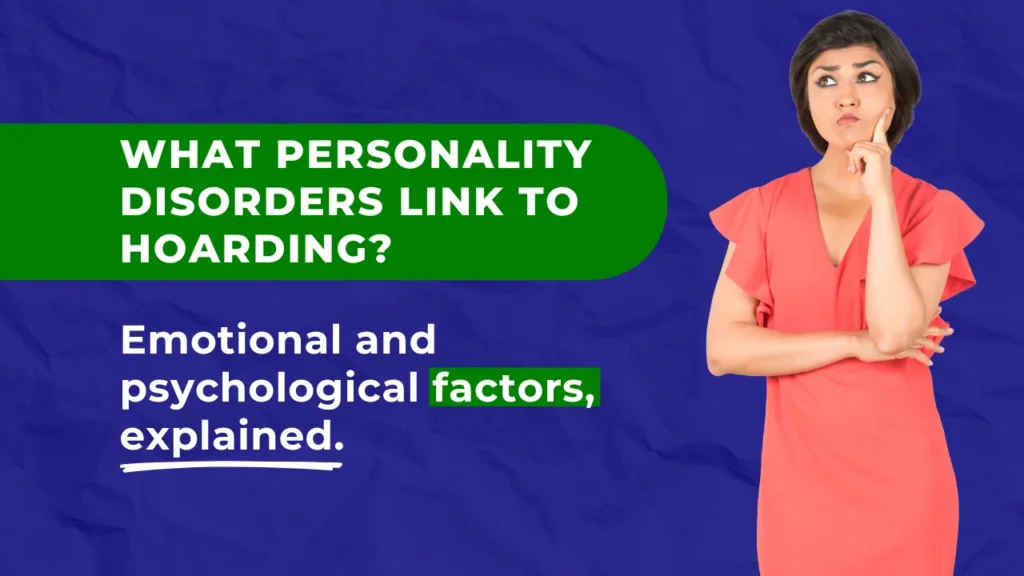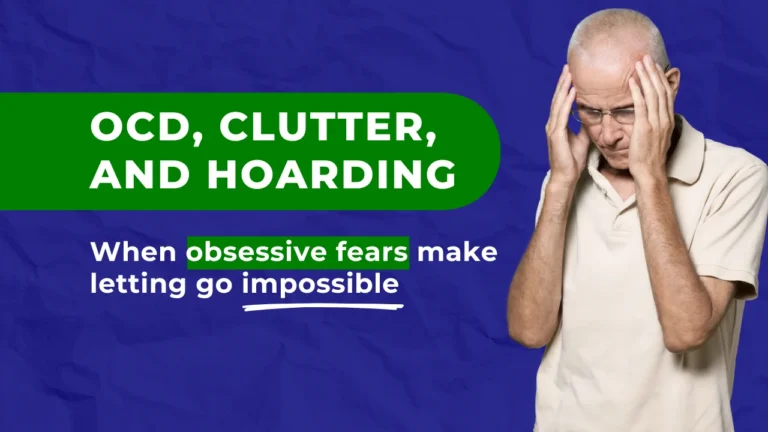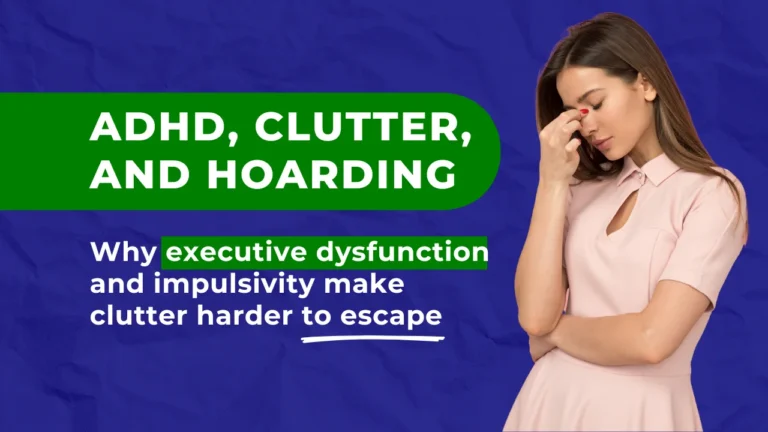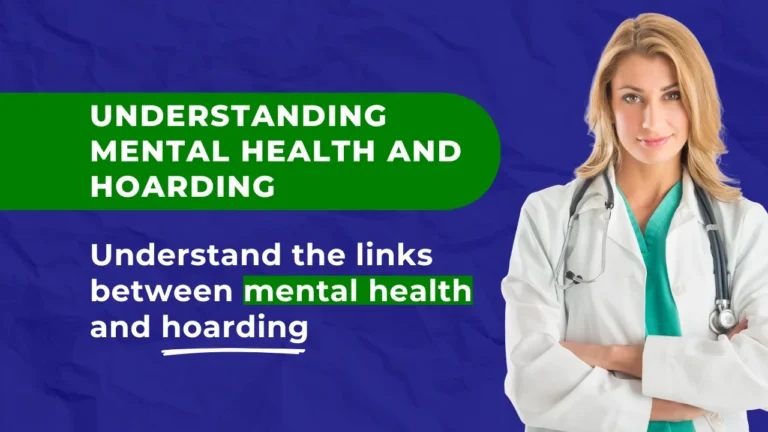Hoarding disorder is often misunderstood. You might think of it as simply a problem with clutter or as a bad habit that’s easy to fix. But for those who live with it, hoarding disorder is much more than just holding onto too many things. It’s a serious health condition that can make it incredibly difficult to let go of possessions, no matter how insignificant they may seem to others.
Many people with hoarding disorder also deal with other health issues, particularly personality disorders, which can make the condition even harder to manage. By recognizing these underlying issues, you can approach the situation with more empathy and offer the right kind of support.
For a comprehensive overview of how various health conditions contribute to hoarding behaviors, explore our detailed guide on mental health and hoarding.
Personality Disorders and Hoarding: What’s the Connection?
Personality disorders are long-term patterns of thoughts, feelings, and behaviors that differ from what’s typically expected. These patterns can cause challenges in relationships, work, and daily life. Hoarding disorder is frequently associated with several personality disorders, the most common of which are highlighted below.
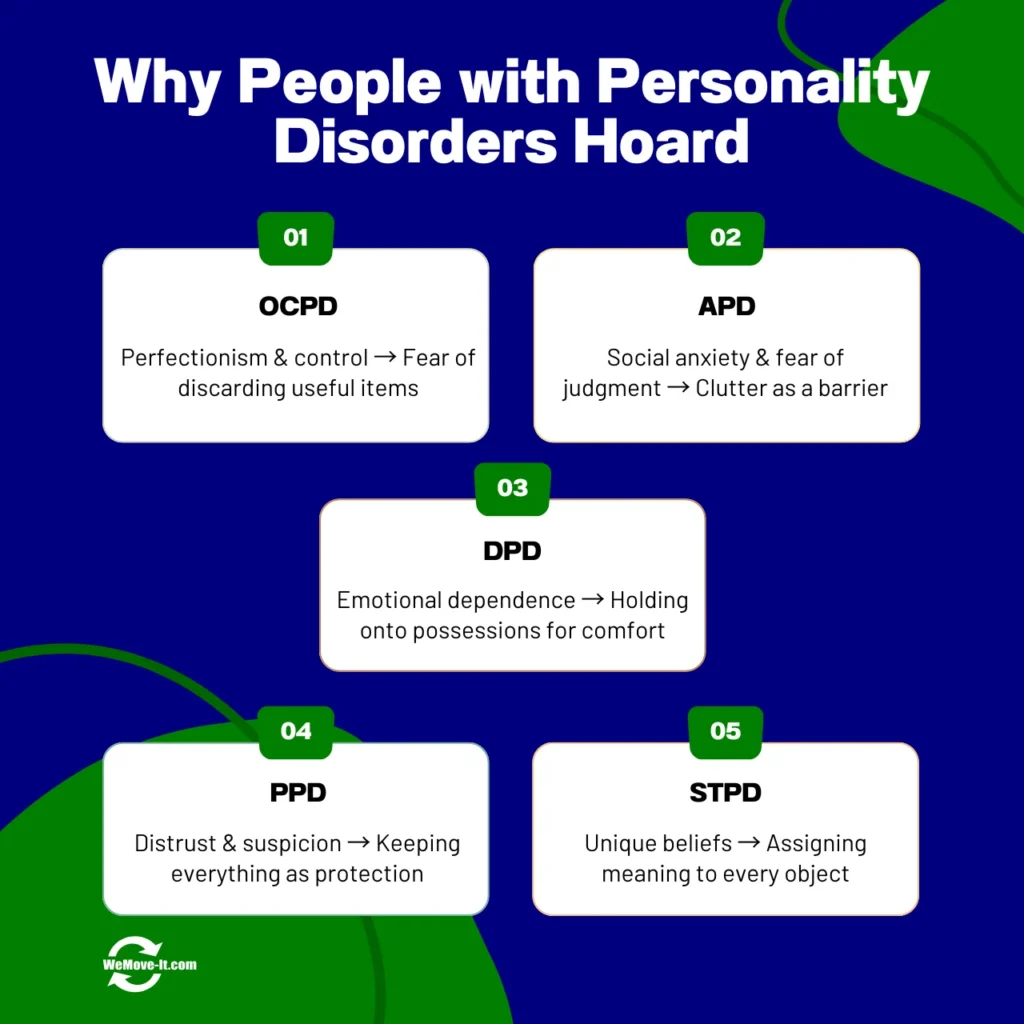
Obsessive-Compulsive Personality Disorder (OCPD)
One of the most common personality disorders associated with hoarding is Obsessive-Compulsive Personality Disorder (OCPD). You might recognize the term “OCD” (Obsessive-Compulsive Disorder), but OCPD is different. While OCD is about specific obsessions and compulsions, OCPD involves a broader pattern of perfectionism, orderliness, and control.
People with OCPD often have a strong need for control and may be preoccupied with rules, details, and order. This need for control can extend to their possessions, where they feel compelled to keep everything in case it might be useful later. For someone with both OCPD and hoarding disorder, every item may have a perceived value or purpose, making it incredibly hard to let go of anything.

You might notice that someone with OCPD-related hoarding has a very particular way of organizing their clutter, even if it seems chaotic to others. They may resist help because they believe that no one else can manage their belongings as well as they can.
Avoidant Personality Disorder (APD)
Avoidant Personality Disorder is another condition often linked to hoarding disorder. People with APD experience intense feelings of social inhibition, inadequacy, and a fear of being judged or rejected. Research also suggests a connection between hoarding and cognitive decline, as individuals struggling with decision-making may develop patterns of excessive accumulation.
For someone with APD and hoarding disorder, their home may become a safe haven where they can avoid the outside world. The clutter isn’t just physical; it’s a barrier that keeps others out and provides a sense of security. Letting go of possessions can feel like losing a part of that safety net, making it even harder to part with anything.

You might find that someone with APD-related hoarding isolates themselves not only emotionally but also physically. Their home becomes a fortress, filled with belongings that give them comfort but also keep them isolated from others. In many cases, hoarding worsens over time, making early intervention critical.
Dependent Personality Disorder (DPD)
Dependent Personality Disorder is characterized by an excessive need to be taken care of, leading to submissive and clingy behavior. People with DPD often struggle with making decisions on their own and rely heavily on others for support and reassurance.
In the context of hoarding, someone with DPD might keep items because they feel emotionally attached to them. These possessions may provide a sense of security, especially if they fear being alone or abandoned. The thought of discarding items can trigger deep fears of loss and abandonment, which are central to DPD.

You might see someone with DPD-related hoarding seeking constant reassurance about what to keep or throw away, yet still finding it nearly impossible to part with anything. The clutter can feel like a tangible representation of their need for support and security.
Paranoid Personality Disorder (PPD)
Paranoid Personality Disorder involves a pervasive distrust and suspicion of others. People with PPD often believe that others are out to harm or deceive them, which makes it difficult for them to trust anyone, even those close to them.
For someone with PPD and hoarding disorder, the clutter may be a result of this deep-seated distrust. They might hoard items because they believe they need to protect themselves or because they can’t trust others to help them if something goes wrong. The fear of being taken advantage of or losing something important can lead them to hold onto everything, just in case.

You might notice that someone with PPD-related hoarding is particularly resistant to help, seeing it as an intrusion or a potential threat. The clutter becomes a way to safeguard against perceived dangers, making it difficult to convince them to let go of anything.
Schizotypal Personality Disorder (STPD)
Schizotypal Personality Disorder is marked by eccentric thoughts, behaviors, and difficulties forming close relationships. People with STPD may have odd beliefs or think that ordinary events have special significance for them.
In someone with both STPD and hoarding disorder, the hoarding behavior might be driven by these unusual beliefs. They might keep items because they see them as having special meanings or because they believe the items are connected to a larger, meaningful pattern that only they understand.
You might find that someone with STPD-related hoarding holds onto objects that seem random or meaningless to others but are deeply significant to them. These beliefs can make it challenging to encourage them to let go of their possessions, as doing so would feel like losing a part of their identity.
How to Recognize and Address the Connection
If you or someone you care about is dealing with hoarding disorder, especially if a personality disorder is involved, it’s important to recognize that the clutter is a symptom of deeper emotional and psychological issues that need to be addressed.
Treatment for hoarding disorder often involves therapy, such as cognitive-behavioral therapy (CBT), which can help address both the hoarding behaviors and the associated personality disorder. In some cases, medication may also be necessary to help manage symptoms. However, treating the disorder is just one part of the solution; dealing with the physical clutter is also essential.
Hoarding Cleaning and Support Services
Living with hoarding disorder is challenging, both mentally and physically. While clutter can make daily life difficult, the emotional burden can be equally overwhelming. A combination of social support, therapy, and even medication can make a huge difference for individuals struggling with hoarding, as well as for those around them.
If you or a loved one needs professional assistance, hoarding cleaning services in Burlington and surrounding areas can provide compassionate and effective solutions. At WeMove-It.com, we understand that hoarding is more than just excess clutter—it’s deeply connected to emotional and psychological struggles. That’s why our team approaches every situation with the care and respect it deserves.
Taking the first step toward a safer, healthier home starts with reaching out for help. Open and respectful communication can make a significant difference, especially when knowing how to talk to a hoarder in a way that encourages trust and cooperation.
